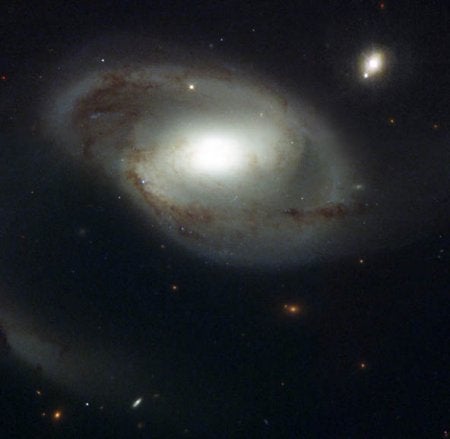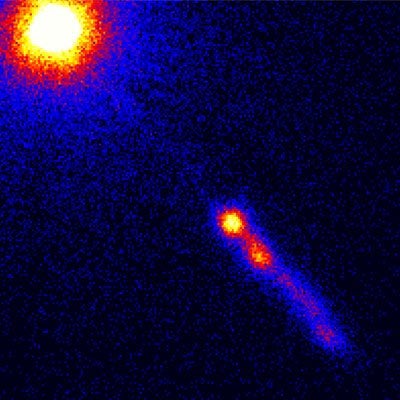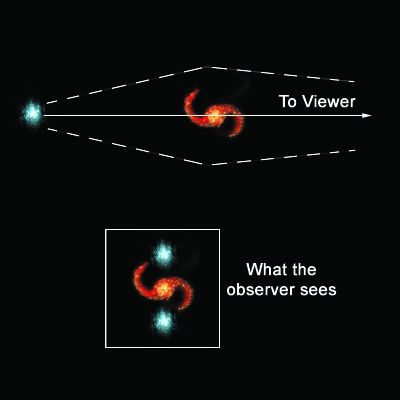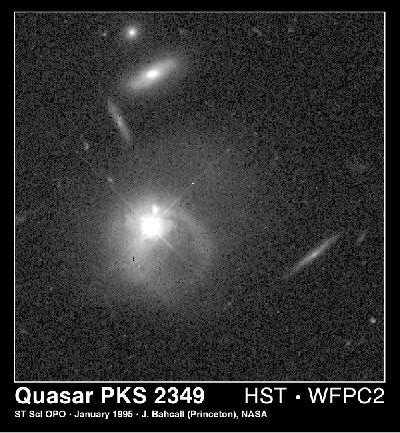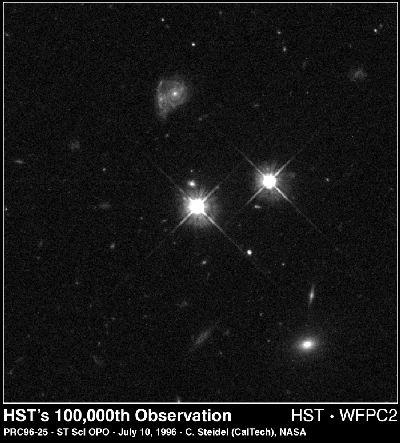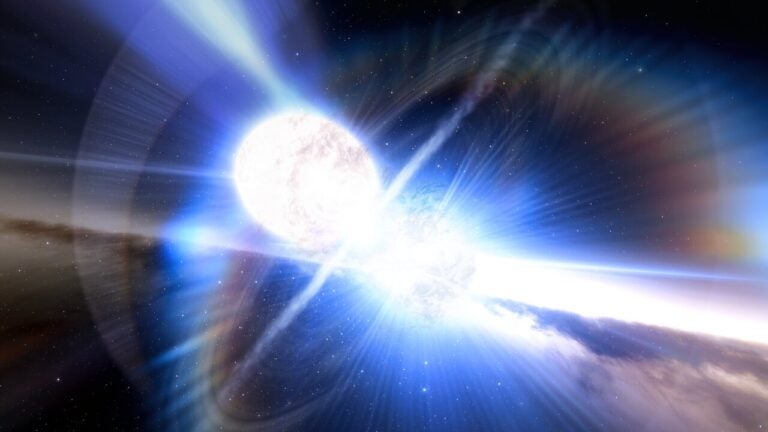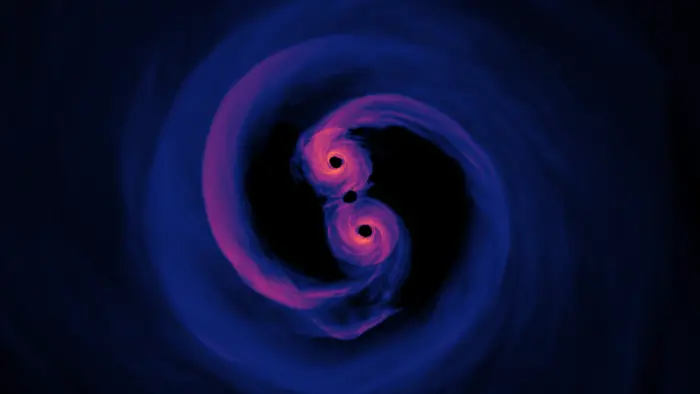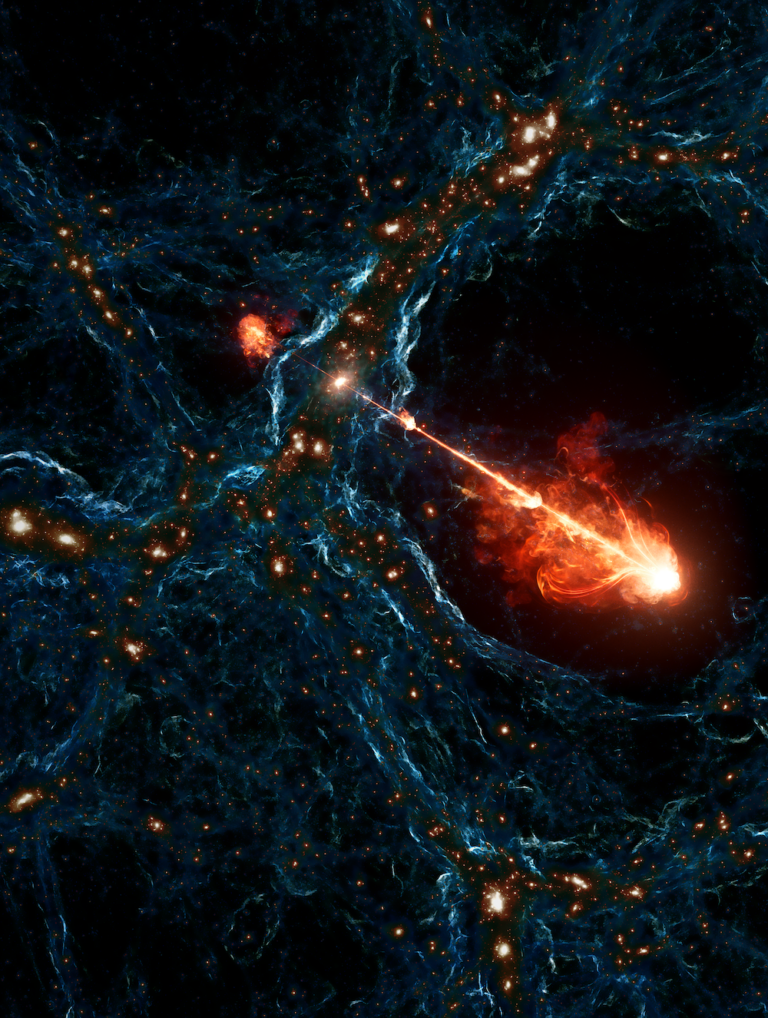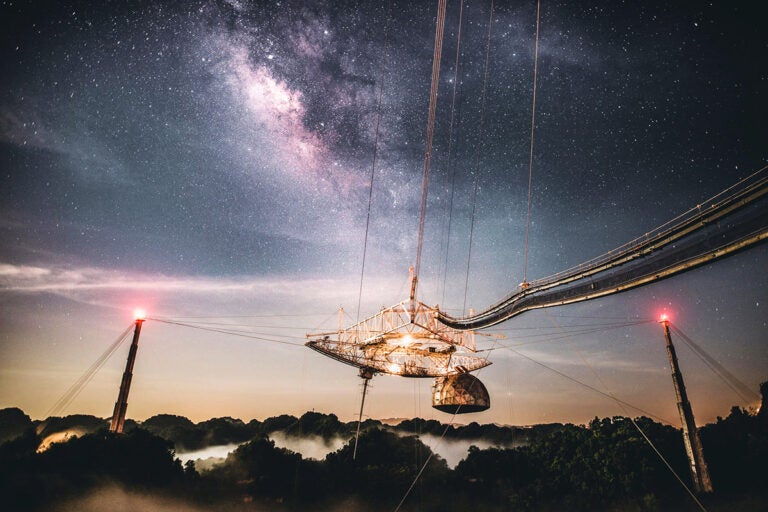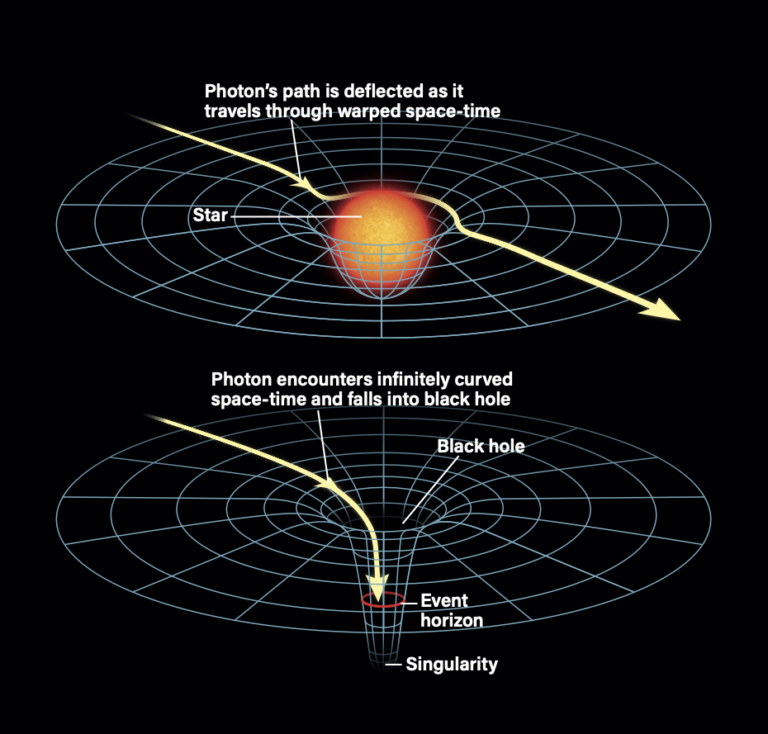In an effort to consolidate the many disparate pieces of information on quasars, we have put together this general timeline, mapping out the major achievements, observations, and space missions centered on quasars. It is not a comprehensive timeline, but we hope this chronology provides a map to better understand the short, yet accomplished, history of quasar research.
2 billion to 4 billion years after the Big Bang
Quasars flourish.
1932
Karl Jansky accidentally discovers radio waves from the Milky Way.
The first known quasars will be detected by their radio emissions. However, later surveys will show just three percent of quasars are radio-loud.
Carl Seyfert identifies a small number of galaxies whose nuclei show unusual spectra.
Some of these “Seyfert galaxies” show spectral features nearly identical to those later seen in quasars.
1949
Working from the Radiophysics Laboratory in Sydney, Australia, radio astronomers John Bolton, Gorden Stanley, and Bruce Slee, determine the positions of some radio sources with better accuracy than ever before. They note that some of these sources coincide with galaxies.
1950s
Astronomers set out to explain why optical maps of the sky don’t match maps of the radio sky.
1960
Alan Sandage of Mount Palomar Observatory conclusively identifies radio source 3C 48, which looks like a star. However, he and other astronomers struggle to identify the absorption lines in this object’s spectrum.
Cyril Hazard at the University of Sydney uses a new observation technique to observe and pinpoint the location of the radio source 3C 273.
Using the 5-meter Hale Telescope on Palomar Mountain, Maarten Schmidt of Caltech observes the spectrum of 3C 273. He finds that, like 3C 48, this radio source’s emission lines are at uncommon wavelengths. However, Schmidt concludes that he is observing a hydrogen spectrum greatly shifted by the Doppler effect. Because of 3C 273’s starlike appearance, it is called a quasi-stellar object. Soon after, this term will be shortened to quasar.
Schmidt’s colleague, Jesse Greenstein, then applies Schmidt’s conclusion to 3C 48 and identifies it as a quasar.
1973
The most widely accepted quasar model is proposed. It suggests that a quasar, like an active galaxy, is generated by a supermassive black hole at the center of a galaxy.
Astronomers discover, much to their amazement, a pair of quasars close to one another whose spectra are identical. They conclude the quasars are actually the same object but the two projections are mirror images due to the quasar’s light being bent around a massive object between Earth and the quasar.
The discovery of the double nature of quasar 0957+561 confirms general relativity as proposed by Einstein, which predicted this “gravitational lens” effect.
1992
Felix Mirabel and Luis Rodriguez discover radio sources near our galactic center that resemble quasars. One of these sources, SS 433, shows signs of high-speed relativistic jets. These jets commonly identify quasars. SS 433 becomes the first system to be called a microquasar.
the mutual gravitational attraction between the quasar and the
companion galaxy.
Hubble Space Telescope (HST) images of quasar PKS 2349 support the hypothesis that quasars occur in the cores of galaxies. The images reveal the environment surrounding a quasar is far more complex than first suspected. These new observations suggest galactic collisions and mergers between quasars and companion galaxies can reignite the supermassive black holes that drive quasars.
1996
A European Southern Observatory survey of radio-emitting quasars finds 25 quasars from when the universe was 20 percent its current age, but none when the universe was 50 percent its current age. The reason for this massive, brilliant turn-on is still a mystery.
objects appear to be close to each other, the galaxy is actually about 2 billion light-years closer to us. The bright object to the right of the quasar is a foreground star. The quasar and star are separated by billions of light-years, but the
quasar looks as just as bright because it produces a tremendous
amount of light. The double spiral galaxy above the quasar is in the foreground as well.
Hubble’s 100,000th picture is of a quasar 9 billion light-years from Earth.
February 1997
Japan’s Institute of Space and Astronautical Sciences links a satellite in space with Earth-based radio antennae to create a telescope larger than Earth called the Very Long Base Interferometry Space Observatory (VLBI). This telescope’s resolving power is equivalent to reading a newspaper headline in Tokyo from Los Angeles.
Scientists will use this telescope to study massive black holes and, in turn, learn more about quasars as well.
September 1998
Initial images from VLBI help sort out the debris of quasars’ jets and allow scientists to recognize individual components of the jets.
2005
NASA’s Space Interferometry Mission, a visible-light mission, will bring distant quasars into much clearer view.
For more information on quasars, check out these resources:
Friedlander, Michael W. Astronomy, from Stonehenge to Quasars. Englewood Cliffs, New Jersey: Prentice-Hall, Inc., 1985.
Garlick, Mark A. “Quasars Next Door.” Astronomy July 2001: 34-39.
Gibilisco, Stan. Black Holes, Quasars, and Other Mysteries of the Universe. Blue Ridge Summit, PA: Tab Books, Inc., 1984.
Hetherington, Norriss S., ed. Encyclopedia of Cosmology. New York: Garland Publishing, Inc., 1993.
Kaufmann III, William J. Galaxies and Quasars. San Francisco: W.H. Freeman and Co., 1979.
Keel, William. “Quasars at Forty.” Astronomy February 2003: 34-41.
Pasachoff, Jay M. Astronomy: from the Earth to the Universe. 5th Ed. Saunders College Publishing, 1998.
Seeds, Michael A. Stars and Galaxies. Belmont, CA: Wadsworth Publishing Co., 1999.
US Space VLBI project homepage: http://us-space-vlbi.jpl.nasa.gov
The VLBI Space Observatory Program homepage: http://www.vsop.isas.ac.jp/

